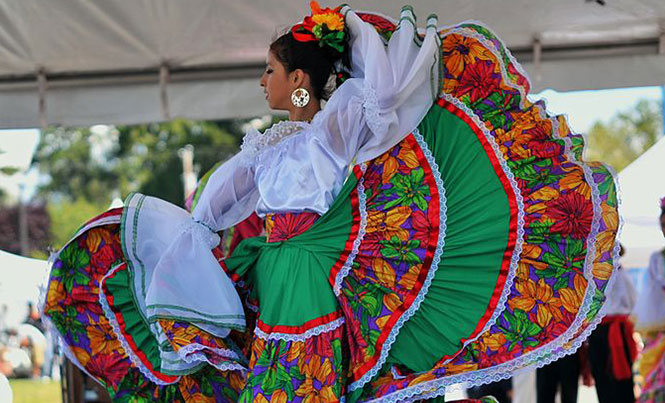
Dance traditions in Mexico have a long history dating back to ancient rituals that worshipped gods
Although there is no record of pre-Hispanic music and dance, they have survived having been passed on from generation to generation “despite being mutilated without the splendor and ritualism that they used to have.”1 We know of them through painting from that period and the chronicles of the Spanish. One of these stories, one of the saddest passages in our history, is “the massacre of the Templo Mayor,” when Aztecs were killed by the Spanish as they danced in the square in honor of the god Tezcatlipoca.
Pre-Hispanic dance was ritualistic and involved a great show of hundreds of people gathered in the main plazas, dancing in concentric circles according to their rank. On some occasions, it followed a compass, while in others it mimicked animals or recounted an event.
There were also dances in houses and palaces that had a purely recreational purpose when there was a celebration. One of these was the mitote2, a Nahuatl word still used today to refer to a big party (although nowadays it also means a big problem).
Among the instruments that have survived is the teponaxtle or teponaztli, a hollowed-out trunk of wood, as well as flutes, deer horns, snails, and others.
Throughout the colonial period, miscegenation also made a contribution to music and dance, integrating European and African rhythms, such as the Aragonese jota and the fandango, giving rise to what we know today as Mexican regional music and dance. This acculturation is also reflected in the traditional costume of each state of the Republic used in folk dance, such as the Veracruz suit reminiscent of the Sevillian costume.
Among the dances that continue today is the dance of concheros, enjoyed by the tourists when performed in both Maya and Aztec land. They used to be performed for the gods, but as a result of evangelization, are now performed for Catholic saints and, above all, in honor of the Virgin of Guadalupe.
1 Alvarez y Alvarez de la Cadena, Luis. (1970) México. Leyendas-Costumbres, Trajes y Danzas. México. Jesús Medina. Editor.
2 Idem